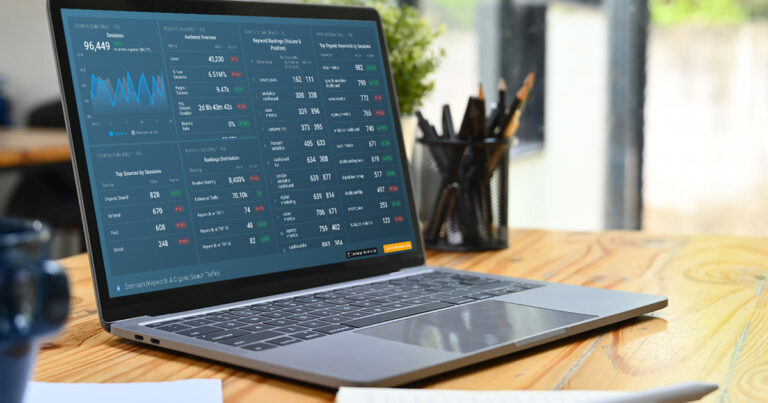How to Take Advantage of Your Digital Channels to Nurture Leads and Generate More Sales
Lead nurturing along a consumer purchase journey is a lot like starting a new relationship. Your consumer isn’t 100% sure at first, so they take some time to get to know your brand better. They might check your online profiles (let’s face it, they definitely do that), or consult with their peers. Maybe there’s also another brand in the picture, so they have to make a choice.
See where we’re going with this? Along the same lines, you’d probably run in the other direction at a proposal on the first date. It’s the same thing when you’re a customer. Being asked to make a purchase right off the bat typically turns customers off because they’re just not yet ready to commit.
While it’s not quite like Tinder, consumers have a lot of choices, and they determine their own purchase journey in today’s highly digital and information-rich environment. Marketers must be sure there are no leaks in the sales funnel that could lead to missed opportunities.
3 Strategic Tactics to Help You Generate More Sales-Qualified Leads
To stand out, build trust and get that purchase, brands need to reach leads in the most appropriate way for where they are in the buying cycle, and nurture them at every stage.
Here’s 3 easy steps to help you reach your buyers when and where it counts, and maximize conversions.
Step 1: Identify your buyers’ journey
- Create buyer personas. What type of people make up your target audience? Understand who they are to help you understand how they make buying decisions. Create as many personas as you need.
- Pinpoint actual buyers and research their habits and decision-making processes. Recruit buyers who:
- Fit into your personas
- Took some type of action—i.e. made a purchase, evaluated your product or service, downloaded a case study, etc.
- Survey each buyer about their purchase journey—i.e. what led them to seek out your product or service, and their research and decision-making process. Surveys can be easily executed using an online survey tool such as GetFeedback.com.
Take the information you’ve learned and implement a plan for how you can reach your buyers more effectively. One key way to reach them is to use digital channels that target your buyers wherever they are. That brings us to step 2.
Step 2: Use Digital Channels for Lead Nurturing
Buyers move swiftly, and marketers need to be prepared to reach them wherever they might be. A multi-channel lead nurturing strategy is key for building brand awareness, trust and closing the deal.
- Email—Personalized, targeted emails can go a long way in the lead nurturing process. Segment your email lists so you’re sending appropriate content to your potential buyer.
- Social Media—Be actively engaged on your social networks. Listening, responding and monitoring will help build trust. Take advantage of social ads to reach your audience based on interest, location, interaction with your brand, and other demographics.
- Retargeting—Implement retargeting campaigns based on metrics such as time spent on your site, pages viewed, or actions taken. If a user gets close to purchase but doesn’t complete it, use a retargeting ad to ensure that lead doesn’t get away.
- Phone or Chat—People value a one-on-one interaction. Making your phone number readily available, or having a chat feature on your website, provides users with immediate answers from a real human, which can certainly make an impact on a purchase decision.
- Dynamic Website Personalization—As users engage, enhance your web content accordingly to provide them with a unique experience that helps drive their purchase decision. This strategy can be executed using a marketing automation platform like Pardot.
- Digital Advertising—Effective advertising today requires us to be tech-savvy and data-driven. A programmatic approach ensures your ads get in front of the right people, deliver experiences tailored to your audiences, and keep you on top of your ad spends and results.
Step 3: Don’t forget about the content
Reaching users through multiple digital channels only works as hard as the content you’re delivering. Be mindful of your calls-to-action, and what information or opportunity you’re giving the user. Ask yourself if it’s the most appropriate way to speak to them at their current stage of the buying cycle, or if the download or offer you’re presenting is what they need to push them further into the decision-making process.
Here are some basic suggestions for the type of content that resonate best at each stage of the buyer’s journey; however, keep in mind that you shouldn’t plan your content around a specific format. Create your content, and then decide the best format for sharing it with your audience.
Fascination Stage: Addressing audience problems through helpful content.
- Blog posts/videos
- Guides/Manuals/Webinars
- Templates/Checklists
Engagement Stage: Tell them how your solution can solve their problem.
- Thought leadership
- Demo videos
- Testimonials
- Case Studies
- FAQs
Information Stage: Provide evidence/reassurance that your solution is the right solution.
- Freebies (free consultation, free trial, free tools)
- Deals/Offers
- Live Demo
- Estimate/Proposal
Instruction Stage: Continue delivering helpful, customer-oriented content.
- Addressing existing customer questions
- Helpful articles and videos
- Solution updates
- Webinars for existing customers – best practices, open dialogue
- Event notifications/learnings
- Correspondence: Newsletter/emails/social
With consumers taking charge of their buying decisions, and well-armed with the resources to do so, your strategy around lead nurturing is more critical than ever.
Don’t send them running into the arms of your competition. Following these strategies will help you give your customers reason to choose you, and keep coming back.


